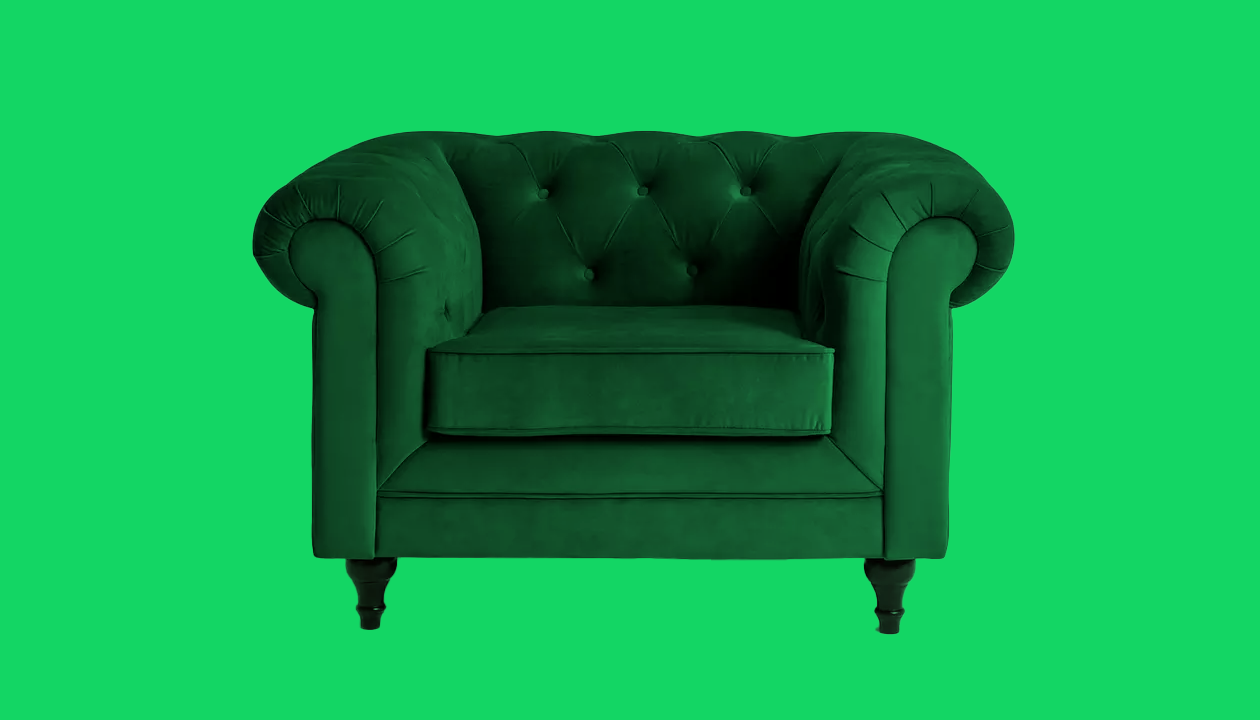
Your sofa is not just a piece of furniture; depending on your home layout, your sofa may be the social area, or it could be a statement piece. We want our homes to be lovely spaces, so to ensure that your sofa stays in the best condition, proper care is essential. In this article, we highlight the best practices for caring for sofas made of different material.
Please note, whilst this article highlights general advice, it is important to follow any specific guidance in your product care guide.
Fabric sofas
Fabric sofas offer a wide range of styles and patterns, making them a popular choice for diverse home interiors. To keep your fabric sofa looking and feeling its best, we recommend the following:
- Regular vacuuming: Over time dust, crumbs, and hair can accumulate on fabric surfaces. To combat this, use your vacuum cleaner to gently remove these particles. You may wish to use a soft brush attachment to effectively suction.
- Spot cleaning: Act quickly if spills occur. Blot the stain with a clean, absorbent cloth to prevent it from setting. Use a mild fabric cleaner or a mixture of water and a small amount of dish soap for spot cleaning.
- Avoid direct sunlight: Prolonged exposure to sunlight can cause fading and damage to fabric fibres. Position your sofa away from direct sunlight or use curtains and blinds to protect it.
- Rotation and fluffing: Rotate cushions regularly to ensure even wear. Give cushions a good fluffing to maintain their shape and provide consistent support.
Leather sofas
Luxurious and durable, leather sofas add sophistication to any room. Proper care can extend their lifespan and preserve their rich texture. Here’s some tips to look after your leather sofa:
- Dusting and wiping: Dust your leather sofa regularly with a soft, dry cloth. Wipe it down with a slightly damp cloth to remove any accumulated dirt.
- Conditioning: Leather can dry out over time, which leads to cracks and a dull appearance. We suggest using a leather conditioner every 6-12 months. Check your user manual for specific guidance on how to condition the leather.
- Avoid harsh cleaning products: Steer clear of harsh chemicals or abrasive cleaning solutions, as they can damage the leather's finish. Stick to products specifically designed for leather care.
- Protection from pets: If you have pets, consider using a leather protector to guard against scratches and stains. Regularly trim your pet's nails to minimise the risk of damage.
You can read our full article on how to care for your leather sofa here.
Faux leather sofas
Faux leather, or synthetic leather, offers an affordable alternative to genuine leather. To maintain its appearance and longevity. Try these steps to care for your faux leather sofa:
- Gentle cleaning: Wipe down faux leather with a soft, damp cloth to remove dust and spills. Avoid abrasive scrubbing, as it may cause damage to the material.
- Mild soap solution: For stubborn stains, create a solution of mild soap and water. Gently clean the affected area, and then wipe it dry with a clean cloth.
- Avoid harsh chemicals: Just like with genuine leather, avoid using harsh chemicals that can strip the faux leather of its protective coating. Stick to mild cleaning agents.
- Regular inspection: Periodically inspect the seams and edges for any signs of wear or peeling. If wear has occurred, we recommend contacting the support team for the best course of action to prevent further wear.
Velvet sofas
Velvet sofas exude opulence and charm, but their delicate nature requires special care to maintain their plush appearance. You can use these tips to care for your velvet sofa:
- Gentle vacuuming: Use a soft brush attachment to vacuum the velvet surface, removing dust and debris. Velvet fibres can easily trap particles, so regular vacuuming is crucial.
- Blotting spills: Act swiftly if spills occur. Use a clean, absorbent cloth to blot the liquid, avoiding rubbing to prevent damage to the velvet pile.
- Steam cleaning: Periodically steam clean your velvet sofa to rejuvenate the fibres and remove any deep-seated dirt. Follow the manufacturer's guidelines and ensure that the sofa is completely dry afterward.
- Brushing and fluffing: Velvet fibres may flatten over time, affecting the sofa's appearance. Gently brush the velvet with a soft bristle brush and fluff the cushions to restore their original softness and shape.
General tips for all sofas
Regardless of the material, here are some general tips to keep your sofa in optimal condition:
- Use arm covers: If your sofa has exposed arms, consider using arm covers to protect against oils and dirt from skin contact.
- No jumping or sitting on armrests: Avoid putting excessive weight on armrests, as this can lead to structural damage.
- Keep pets in check: While we love our furry friends, their claws and fur can be detrimental to sofas. Use pet-friendly covers or blankets for added protection.
- Read manufacturer's instructions: Always follow the care instructions provided by the manufacturer. These guidelines are tailored to the specific materials and construction of your sofa.
Support summary
Investing in a high-quality sofa is just the first step; maintaining its beauty and functionality requires ongoing care. By following these material-specific care tips you can ensure that your seating remains a source of comfort and style for years to come.
Click here to read our tips on how to look after your upholstery.